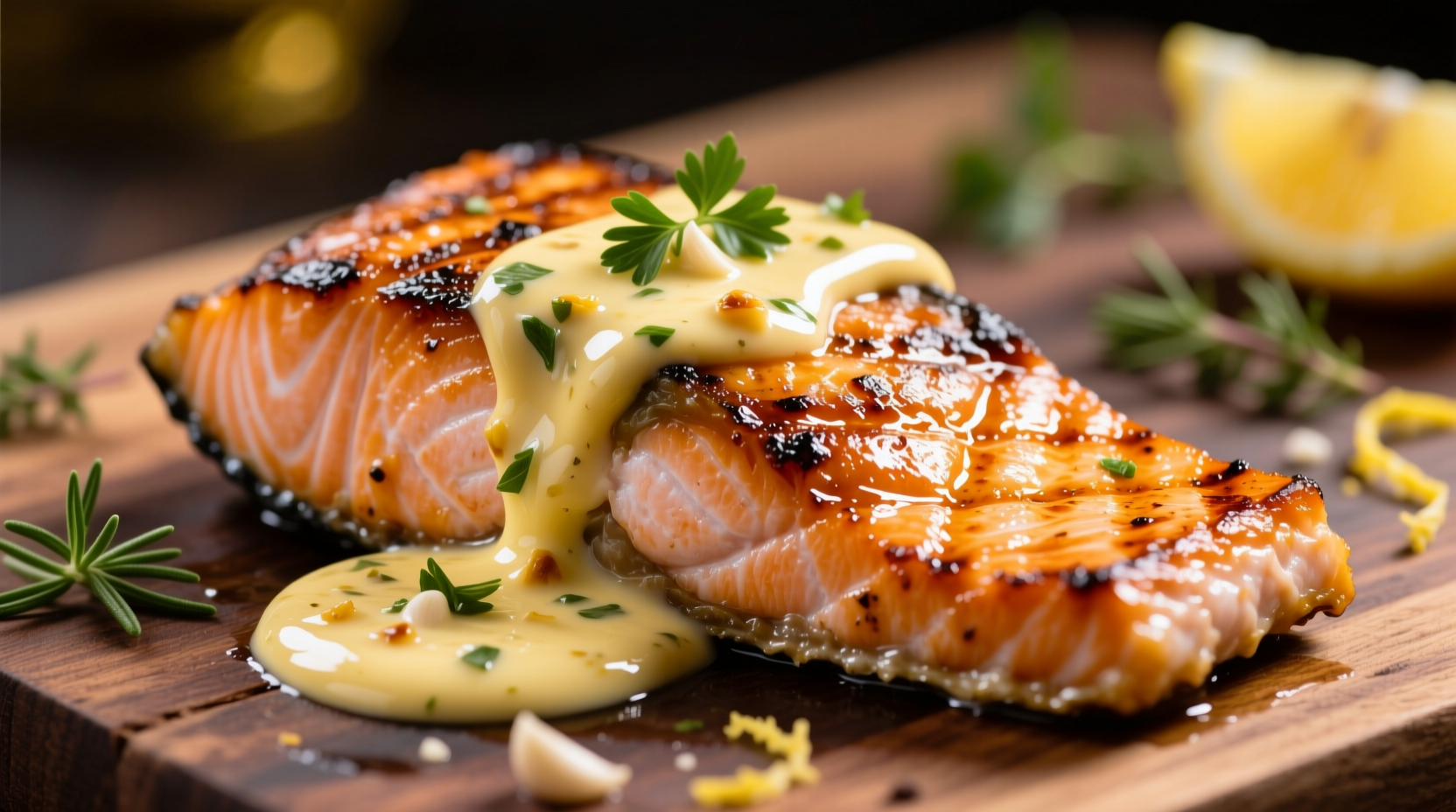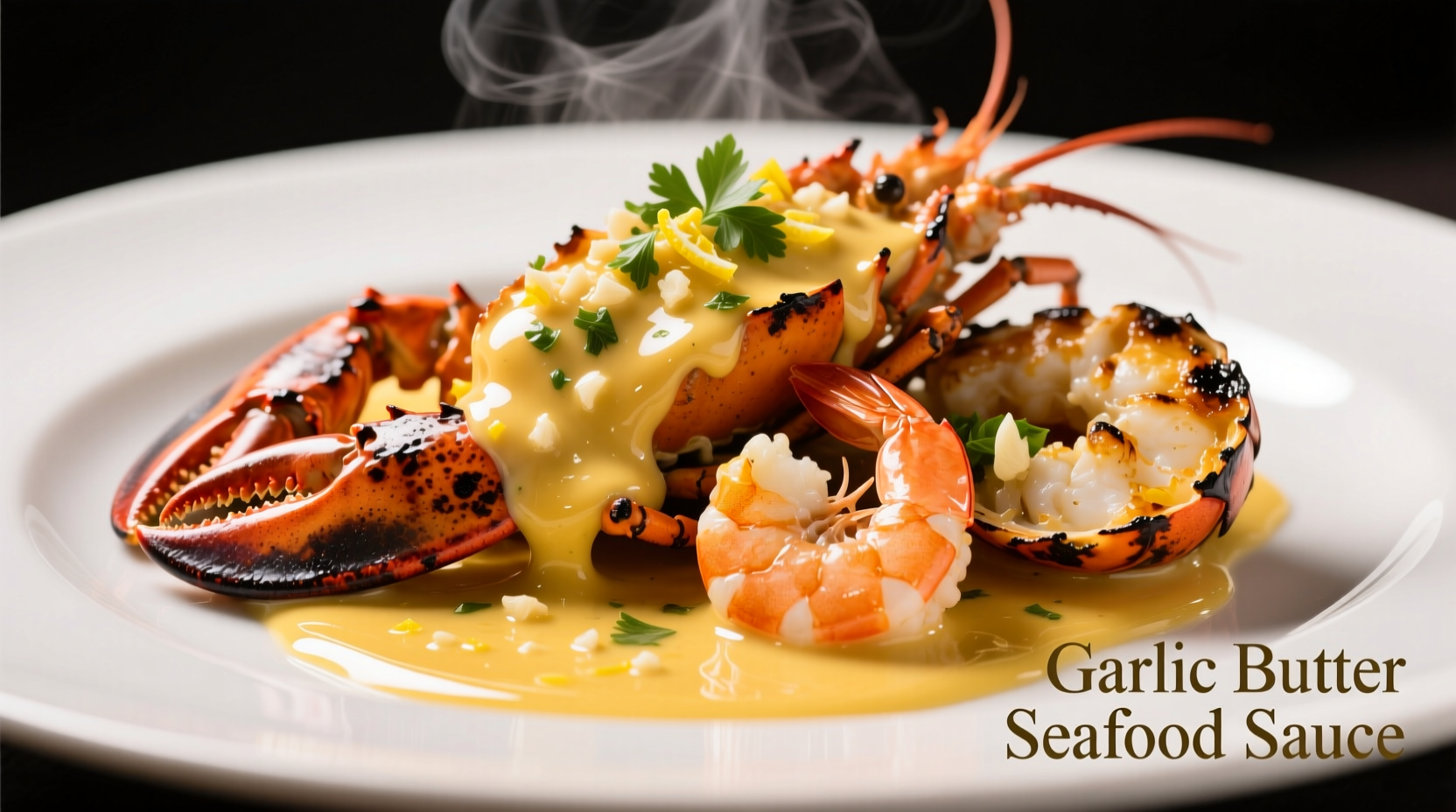Garlic butter seafood sauce is a versatile, restaurant-quality sauce made with fresh garlic, high-quality butter, lemon juice, and herbs that perfectly complements fish, shrimp, lobster, and other seafood dishes. This simple 10-minute recipe yields a smooth, emulsified sauce with balanced flavors that enhances rather than overwhelms delicate seafood.
Creating the perfect garlic butter seafood sauce isn't just about combining ingredients—it's understanding how each component interacts to create a harmonious flavor profile that elevates your seafood without masking its natural taste. As a professional chef with years of experience in fine dining kitchens, I've perfected this essential sauce that transforms simple seafood preparations into restaurant-quality meals.
The Essential Garlic Butter Seafood Sauce Recipe
Follow this precise method for a silky, emulsified sauce that won't break or separate. The key is proper temperature control and gradual ingredient incorporation.
| Ingredient | Measurement | Professional Tip |
|---|---|---|
| Unsalted butter | 1 cup (2 sticks) | European-style with 82%+ butterfat for richer flavor |
| Fresh garlic, minced | 4-5 cloves | Minced by hand—not processed—to prevent bitterness |
| Fresh lemon juice | 2 tablespoons | Squeeze just before adding for brightest flavor |
| Fresh parsley, chopped | 2 tablespoons | Flat-leaf for better texture and flavor |
| Sea salt | To taste | Add after emulsification for proper seasoning |
| White wine (optional) | 2 tablespoons | Dry variety like Sauvignon Blanc enhances complexity |
Why This Garlic Butter Sauce Works: The Science Behind the Simplicity
The magic of garlic butter seafood sauce lies in emulsification—the process where fat (butter) and water-based ingredients (lemon juice) combine to create a stable, creamy texture. When executed properly, this creates a sauce that clings perfectly to seafood without overwhelming it.
Food science research from the Culinary Institute of America confirms that the ideal temperature range for butter emulsification is between 110-120°F (43-49°C). Exceeding this temperature causes the butter to separate, resulting in a greasy, broken sauce. This explains why many home cooks struggle with this seemingly simple preparation.

Step-by-Step Preparation Guide
Follow this professional technique for flawless results every time:
- Sweat the garlic: In a cold saucepan, combine butter and minced garlic. Heat over medium-low until butter melts and garlic becomes fragrant (about 3-4 minutes). Never let garlic brown—this creates bitterness.
- Build flavor foundation: If using wine, add now and simmer until reduced by half (approximately 2 minutes).
- Emulsify carefully: Remove from heat and gradually whisk in lemon juice. The residual heat helps create a stable emulsion without breaking.
- Finish with herbs: Stir in chopped parsley and season with sea salt to taste.
- Immediate use: Serve within 15 minutes for best texture and flavor. Reheating can cause separation.
Seafood Pairing Guide: Which Fish Work Best
Not all seafood benefits equally from garlic butter sauce. Understanding flavor intensity matching ensures perfect pairings:
| Seafood Type | Flavor Intensity | Recommended Sauce Application |
|---|---|---|
| Delicate fish (halibut, cod, sole) | Mild | Light drizzle—1-2 tablespoons per serving |
| Firm fish (salmon, swordfish) | Moderate | Moderate coating—2-3 tablespoons per serving |
| Shellfish (shrimp, lobster, scallops) | Bold | Generous coating—3-4 tablespoons per serving |
| Strong fish (mackerel, bluefish) | Very strong | Use sparingly or substitute with herb oil |
Avoid These Common Garlic Butter Sauce Mistakes
Professional kitchens see these errors repeatedly. Avoid them for perfect results:
- Using pre-minced garlic: Contains preservatives that create off-flavors when heated. Freshly minced garlic provides brighter, cleaner flavor.
- High-heat cooking: Causes butter to separate and garlic to burn. Always use low-to-medium heat.
- Adding all ingredients at once: Prevents proper emulsification. Gradual incorporation is essential.
- Over-seasoning: Salt content varies by butter brand. Always season at the end after emulsification.
- Using cold ingredients: Temperature shock breaks the emulsion. Bring all ingredients to room temperature first.
Historical Evolution of Garlic Butter Sauces
Garlic butter sauces have evolved significantly from their humble beginnings:
| Era | Development | Culinary Significance |
|---|---|---|
| Ancient Mediterranean | Simple garlic and olive oil mixtures | Basic preservation and flavor enhancement |
| Medieval Europe | Butter replaces olive oil in northern regions | Adaptation to local ingredients and climate |
| 18th Century France | Beurre Maître d'Hôtel formalized | First standardized garlic butter sauce recipe |
| 20th Century America | Garlic butter seafood sauce popularized | Post-WWII seafood restaurant boom |
| Modern Era | Technique refinement and global variations | Emphasis on ingredient quality and precision |
When NOT to Use Garlic Butter Seafood Sauce
Understanding context boundaries prevents culinary missteps. Avoid garlic butter sauce in these situations:
- With strongly flavored fish: Mackerel, bluefish, or herring already have robust flavors that compete with garlic butter rather than complement it.
- For cold seafood preparations: The sauce solidifies when chilled, creating an unpleasant texture on dishes like ceviche or cold shrimp salad.
- With delicate shellfish presentations: Raw oysters or simply grilled scallops showcase natural flavors best without rich sauces.
- For dairy-allergic guests: Always have a clarified butter or olive oil alternative prepared when hosting.
Popular Variations for Dietary Needs and Flavor Preferences
Professional chefs maintain the sauce's integrity while accommodating different needs:
- Dairy-free version: Substitute butter with refined coconut oil and add 1 teaspoon nutritional yeast for umami depth
- Spicy garlic butter: Infuse butter with 1/4 teaspoon red pepper flakes while melting
- Herb-infused variation: Add 1 teaspoon each of fresh thyme and tarragon with the parsley
- Lemon-garlic compound butter: Solidify excess sauce into logs for grilling applications
- White wine enhancement: Use 2 tablespoons dry white wine reduced by half before adding lemon juice
Storage and Reheating Guidelines
While best used fresh, proper storage extends usability:
- Refrigeration: Store in airtight container for up to 3 days. The USDA Food Safety and Inspection Service recommends consuming dairy-based sauces within this timeframe (USDA Refrigeration Guidelines)
- Reheating: Warm gently over lowest heat while whisking constantly. Never microwave, which causes separation.
- Freezing: Portion into ice cube trays, then transfer to freezer bags for up to 2 months. Thaw in refrigerator before gentle reheating.
Perfecting Your Garlic Butter Seafood Sauce: Pro Tips
Implement these professional techniques for exceptional results:
- Butter quality matters: European-style butter with higher fat content (82-86%) creates a richer, more stable emulsion than standard American butter (80% fat)
- Garlic preparation is crucial: Mince by hand rather than using a press to prevent releasing bitter compounds
- Temperature control: Remove from heat before adding acidic components to prevent breaking
- Season at the end: Salt content varies by butter brand, so season after emulsification for proper balance
- Herb timing: Add delicate herbs like parsley at the end to preserve fresh flavor and color











 浙公网安备
33010002000092号
浙公网安备
33010002000092号 浙B2-20120091-4
浙B2-20120091-4